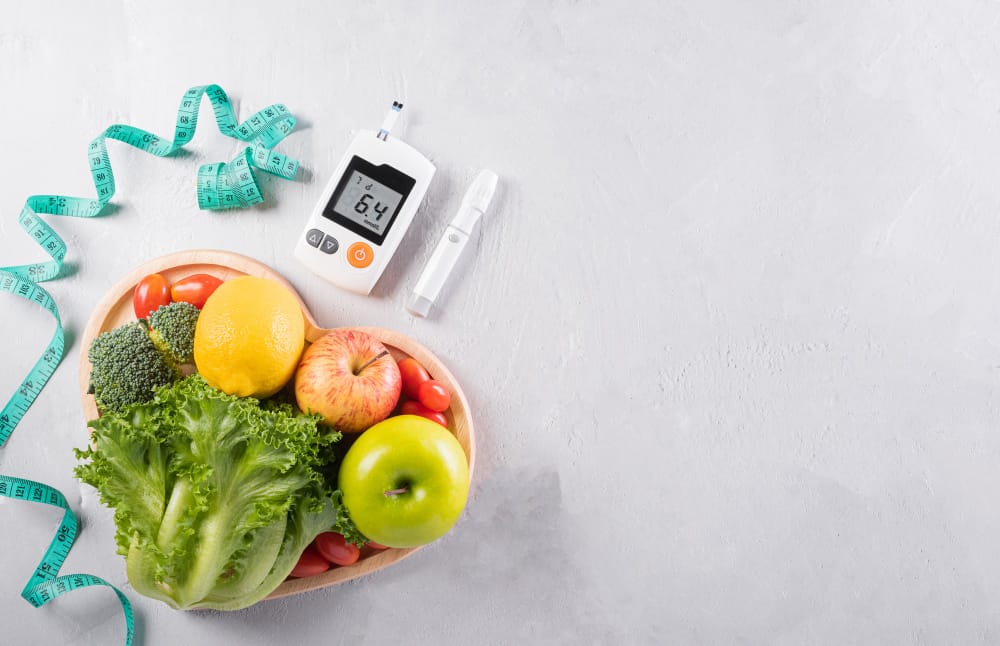Gestational diabetes is not that common in pregnant women, but if you have it, then the most challenging thing is to keep your fasting levels below 95. Fasting levels are measured as soon as you get up, and various factors could increase fasting levels even more. Following a healthy lifestyle, including focusing on diet, eating frequent but small meals, exercising regularly, eating a protein snack before bed, keeping hydrated, getting quality sleep, and taking insulin doses, can help. If you don’t take such steps, it can lead to adverse pregnancy outcomes.
With pregnancy hormones going crazy, it’s common for women to suffer from gestational diabetes.
It doesn’t matter if you’ve had diabetes before getting pregnant because this kind of diabetes is only prevalent among pregnant women. As many as 9% of women develop it, according to a study from the Centers for Disease Control and Prevention (CDC).
Maintaining the target blood sugar level can be difficult, especially during pregnancy.
As it is, you’re avoiding any junk food and trying to have as much healthy food as possible, but there are still things you ought to control or change.
It can be hard to have this kind of control during pregnancy, but not impossible to keep the fasting numbers under 95 if you want your baby to be born healthy. Let’s take a look at how to achieve this!
Gestational diabetes 101
Let’s familiarize ourselves with what gestational diabetes is.
Some people tend to develop high blood sugar levels during pregnancy, known as gestational diabetes mellitus (GDM) or gestational diabetes.

It usually rises or is diagnosed in the 24th and 28th weeks of pregnancy. But having this kind of diabetes doesn’t imply that you had diabetes before or will have it afterward, and it’s all because of your pregnancy hormones.
When you’re pregnant, your body produces larger amounts of hormones, including human placental lactogen (hPL) and other hormones that increase insulin resistance.
These hormones affect your placenta and help sustain your pregnancy. Gradually, these hormones increase and make your body resistant to insulin (the hormone that controls blood sugar).
Insulin helps move glucose out of your blood into your cells, where it’s used for energy.
In pregnancy, your body on its own becomes slightly insulin resistant so that more glucose is available in your bloodstream to be passed to the baby.
When this insulin resistance becomes too strong, the blood glucose levels rise abnormally and cause gestational diabetes.
Some symptoms to help identify it includes:
- Fatigue
- Blurred vision
- Excessive thirst
- Excessive need to urinate
- Yeast infection
It’s essential to have an overall knowledge about this kind of diabetes if you just found out from your doctor about it or suspect that you have it because of the symptoms.
Increased fasting levels for gestational diabetes

Keeping your gestational diabetes in check is hard in itself, but regulating your fasting levels under 95 is even more challenging.
Fasting blood sugar levels (levels taken first thing in the morning when you wake up) are the hardest to control during pregnancy when diagnosed with gestational diabetes.
This happens because when you’re sleeping, you don’t eat or drink anything, and neither are you active.
The body has to keep the level of blood sugar under control on its own, which is challenging to manage if you don’t take proper steps for it when you’re awake.
A lot of things can lead to a higher fasting level:
- What you ate earlier in the evening can have a significant impact. Too much carbohydrate in your meal or snacks before bed can lead to high fasting levels, as your body can only produce or use so much insulin.
- When you eat large meals in longer intervals, it can be an extremely long time to go without eating, which can have a detrimental effect.
- Hydration levels.
- Insufficient and poor levels of sleep quality.
The other two factors that many people don’t know about but effectively raise fasting levels are the dawn phenomenon and the Somogyi effect.
Dawn phenomenon
The dawn phenomenon happens when the body releases hormones in the early morning hours in all people, be it diabetic or non-diabetic.
These hormones cause blood sugar spikes, giving the body a boost and a wake-up call to start the day.
In diabetes, enough insulin isn’t produced, or insulin can be used effectively to process this boost in glucose, resulting in high fasting levels.
It mostly happens between 3 am to 8 am.
Somogyi effect
The somogyi effect only affects some diabetics and not all.
When blood sugar levels drop low at night, the body responds by dumping glucose to raise blood sugar levels.
Tips to decrease fasting levels for gestational diabetes
When you know what’s causing this fasting level to increase above 95 milligrams per deciliter, then you’ll be aware of the changes you need to make to bring it below 95.
From the above section, it’s clear that you’ll have to make some dietary and lifestyle changes if you want gestational diabetes to be in control during pregnancy and have a healthy pregnancy.
1. Pay attention to what you eat

Of course, with the baby coming, you must be paying attention to eating a well-balanced, healthy diet, but that’s not all that will help bring down the level.
- Eating the right food at the right time in the correct quantity is all you need to do to bring a change.
- Eating a moderate quantity of carbohydrates gives you energy and glucose but not so much that it throws your blood sugar level off balance.
- Try to eat smaller and more frequent meals, like eating something every 2 hours.
- Ensure you have the right amount of starches, fruits, vegetables, proteins, milk, and fats.
2. Regular exercise
While more and more people are becoming health conscious even during their pregnancy and adopting the practice of doing regular exercise, it’s even more critical for people with gestational diabetes.
Try to maintain a moderate weight after discussing it with your doctor, and do exercises such as yoga.
Aim for 30 minutes of moderate exercise at least three times a week.
4. Snack before bed
Many people like to snack before going to bed, and many people tend to do so during pregnancy because of changing eating habits or cravings, which are difficult to control.
Eating a protein-rich snack before bed can help you fulfill the need to eat something while keeping your blood sugar level in check.
5. Hydration
Drink plenty of water throughout the day because dehydration prevents your body from processing sugar effectively.
Keep a separate bottle with you all the time to keep your number of glasses in check, and make sure to keep it by your bedside during the night too.
You can drink decaffeinated coffee or tea when it comes to other beverages. But you can’t drink a sugary drink, soda, or even juice.
6. Quality of sleep
Getting less than 6 hours of sleep can make your blood sugar level spike.
So, try to get the most sleep you can during the night by making sure you are comfortable in every way.
You can get extra pillows, listen to white noise, or read books to drift to sleep more comfortably.
7. Insulin treatment
Even after all these changes in your life, you might still have to depend on insulin doses after discussing with your doctor to keep the blood sugar under control.
Taking insulin doses doesn’t hurt your baby in any way or increase the complications, but it’s like extra help to make sure you and the baby remain safe.
After discussing it with your doctor, they will let you know how, when, and how much of it you need to take.
It should be done under the proper guidance of your doctor, and you should never self-medicate, for you can risk increasing complications.
8. Keeping a journal

Keeping track of your blood sugar level throughout the day is vital.
Information about your diet, exercise, and what things affect your blood sugar is needed to keep yourself in check.
It might require you to test 5 times a day, so keeping track becomes more important.
FAQs
Who is at risk for gestational diabetes?
Not every pregnant person goes through gestational diabetes, and according to the Centers for Disease Control and Prevention (CDC), it’s estimated to occur in 2-14 percent of pregnancies in the US.
But there’s an increased risk factor in people with:
– High blood pressure
– Family history of diabetes
– Overweight before pregnancy
– Great weight gain during pregnancy
– Expecting multiple babies
– Previously given birth to a baby weighing more than 9 pounds
– Gestational diabetes in the past
– Unexplained miscarriage or stillbirth
– PCOS, acanthosis nigricans, or other conditions associated with insulin resistance
– African American, Hispanic/Latin American, American Indian, Alaska Native, Native Hawaiian, or Pacific Islander ancestry
What happens to the baby with gestational diabetes?
When you don’t control your gestational diabetes and don’t take the steps required to keep your blood sugar level under control, it can lead to adverse pregnancy outcomes and affect the health of your child.
It can also leave you with type 2 diabetes later in life after childbirth.
The baby born might have:
– A high birth weight
– Breathing difficulties
– Low blood sugar
– Shoulder dystocia causes their shoulders to get stuck in the birth canal during labor.
Is gestational diabetes permanent?
Those who have gestational diabetes during their pregnancy can ensure they don’t end up with diabetes after birth by taking proper steps.
For most women, it goes away, and there’s no need to worry about it. But there’s a chance of ending up with type 2 diabetes even after birth if you don’t try to control it during pregnancy.
To summarise
Not all pregnant people get gestational diabetes, although their risk increases when various factors are involved. Even with this kind of diabetes, most people suffer from a spike in fasting levels.
When you adopt healthy eating and lifestyle practices, there’s a great chance of reducing the level and bringing it below 95 if you continue doing it until your baby is born. It’s essential to control your fasting levels; otherwise, it can lead to adverse pregnancy outcomes.
With proper guidance and a treatment plan from your doctor, and with the support of your family, you should be able to bring down your fasting levels below 95 and have a healthy pregnancy.
References
- https://www.verywellfamily.com/preexisting-diabetes-in-pregnancy-risks-1087654
- https://www.healthline.com/health/gestational-diabetes
- https://www.healthline.com/health/diabetes/insulin-injection


